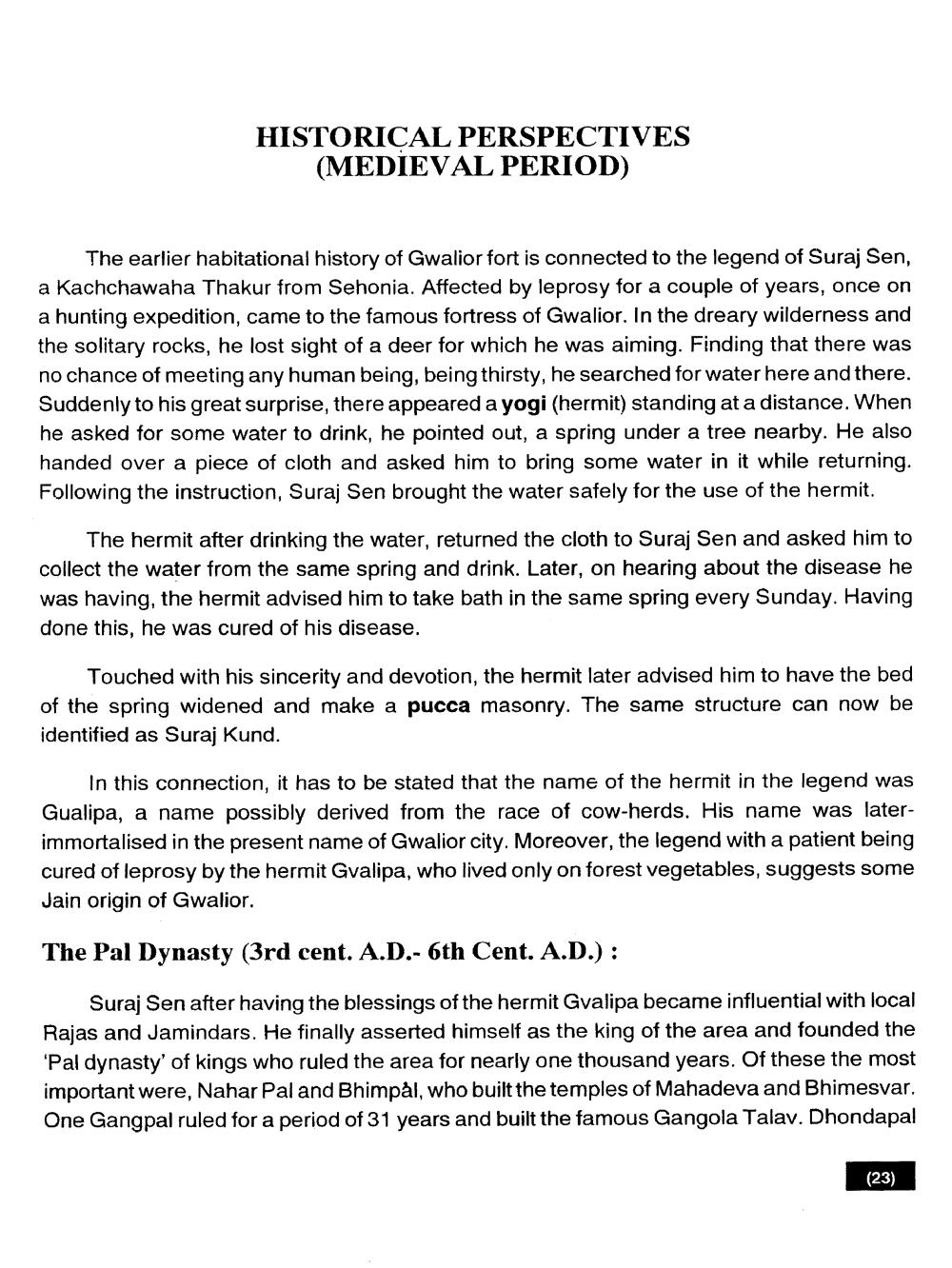________________
HISTORICAL PERSPECTIVES
(MEDIEVAL PERIOD)
The earlier habitational history of Gwalior fort is connected to the legend of Suraj Sen, a Kachchawaha Thakur from Sehonia. Affected by leprosy for a couple of years, once on a hunting expedition, came to the famous fortress of Gwalior. In the dreary wilderness and the solitary rocks, he lost sight of a deer for which he was aiming. Finding that there was no chance of meeting any human being, being thirsty, he searched for water here and there. Suddenly to his great surprise, there appeared a yogi (hermit) standing at a distance. When he asked for some water to drink, he pointed out, a spring under a tree nearby. He also handed over a piece of cloth and asked him to bring some water in it while returning. Following the instruction, Suraj Sen brought the water safely for the use of the hermit.
The hermit after drinking the water, returned the cloth to Suraj Sen and asked him to collect the water from the same spring and drink. Later, on hearing about the disease he was having, the hermit advised him to take bath in the same spring every Sunday. Having done this, he was cured of his disease.
Touched with his sincerity and devotion, the hermit later advised him to have the bed of the spring widened and make a pucca masonry. The same structure can now be identified as Suraj Kund.
In this connection, it has to be stated that the name of the hermit in the legend was Gualipa, a name possibly derived from the race of cow-herds. His name was laterimmortalised in the present name of Gwalior city. Moreover, the legend with a patient being cured of leprosy by the hermit Gvalipa, who lived only on forest vegetables, suggests some Jain origin of Gwalior.
The Pal Dynasty (3rd cent. A.D.- 6th Cent. A.D.):
Suraj Sen after having the blessings of the hermit Gvalipa became influential with local Rajas and Jamindars. He finally asserted himself as the king of the area and founded the 'Pal dynasty' of kings who ruled the area for nearly one thousand years. Of these the most important were, Nahar Pal and Bhimpal, who built the temples of Mahadeva and Bhimesvar. One Gangpal ruled for a period of 31 years and built the famous Gangola Talav. Dhondapal
(23)




